This device has been accumulating dust at home, until I stumbled upon it one day, and by the look of the device and the simple LCD screen, 13 years-old me noticed it must be pretty old, which of course immediately caught enough of my interest to replace the batteries. And, after the battery replacement, to my amusement the computer turned on and the BIOS prompt on the screen claimed: “Phoenix 8086 BIOS”. The fact that the machine in front of me ran a processor I could only read about until then _really_ sparked my interest, so I took an old MS-DOS reference and started exploring into the wonderfully primitive world of DOS. Now, at 16, I’m still fond of this computer, still using it sometimes for focused writing and working “off the grid”. I also found out that this computer is a pretty rare one, with little documentation describing it, and even less documentation describing it correctly. This article is an attempt at exactly that: giving an old wonder of engineering a much deserved accurate description and perhaps a somewhat biased review.
Although the Tidalwave branded palmtops are supposed to be “the OG” palmtops of its kind, it’s easy to find almost identical products branded as Zeos Pocket PC, and under some other names. They all released in the year of 1992 the initial price was around 600$, which adds up to about 1100$ today.
The palmtop really doesn’t look like much: the case has a simple gray soft-touch finish that looks elegant, but not exceedingly eye catching.
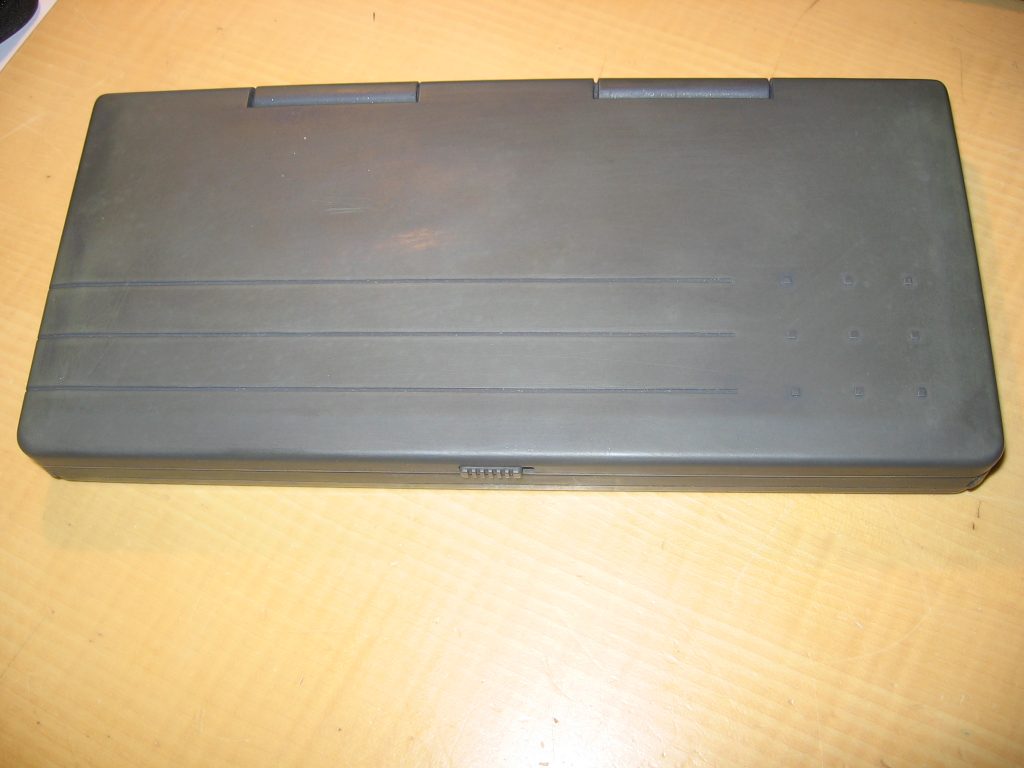
The screen is locked in place by a simple slide mechanism, and swivels up to 150 degrees. For a portable computer made in 1992, it’s also freakishly thin. On the bottom of the unit, two lids for two battery compartments can be seen. The Tidalwave needs three batteries to work: two standard AA cells provide the power to run the computer and a small CR2032 button cell keeps the RAM awake when the computer is powered off. The computer actually implements an S3-standby of sorts, with the on/off button suspending everything but the battery-backed RAM, so waking up from standby is literally instant, better than most recent hardware. The battery life of the AA batteries isn’t bad either, but CPU-intensive tasks can drain them in a day of continuous usage. That’s why the computer should be turned off when it’s not in use. It also warns the user when the main or backup batteries are low to avoid losing your work. As the batteries drain, the keyboard becomes less and less reliable, and the computer becomes slightly less snappy. I’m not quite sure if this is a power saving measure of some sort, or rather a result of cheap voltage-depending clock oscillators. (It’s not a bug, it’s a feature!)
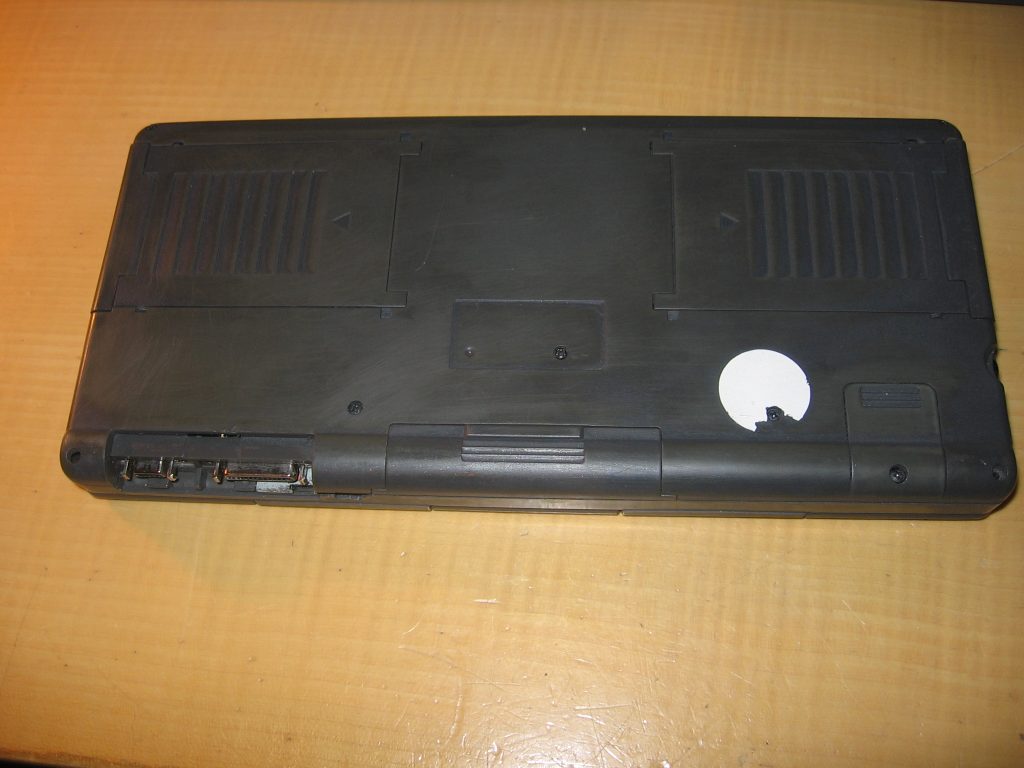
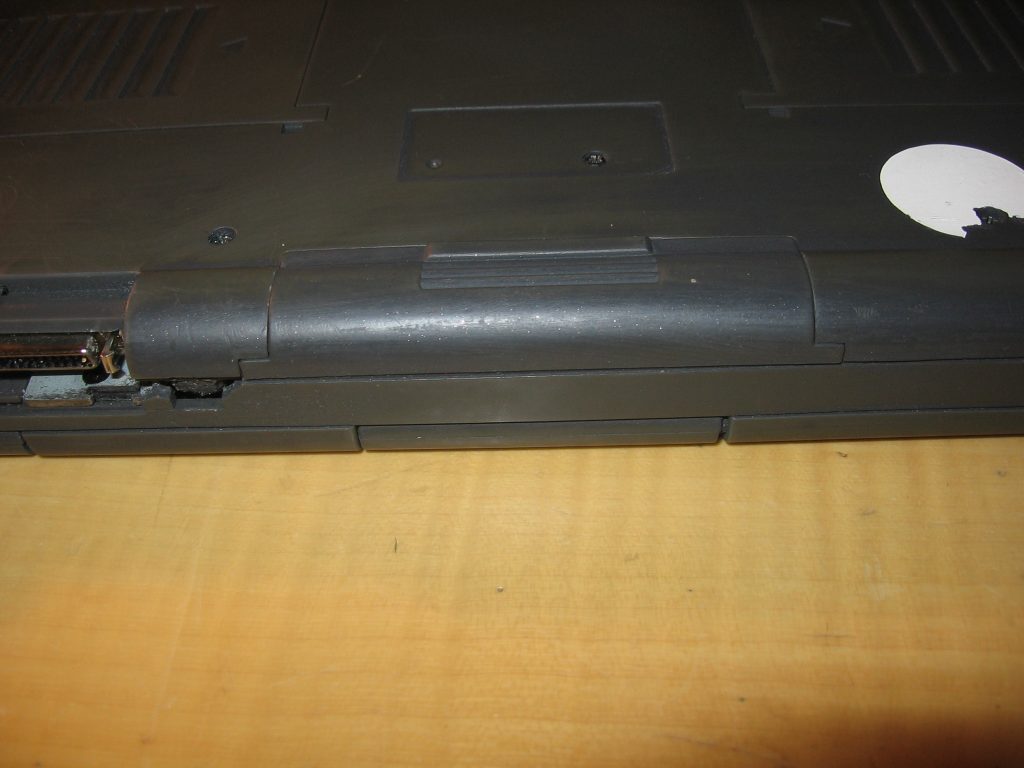
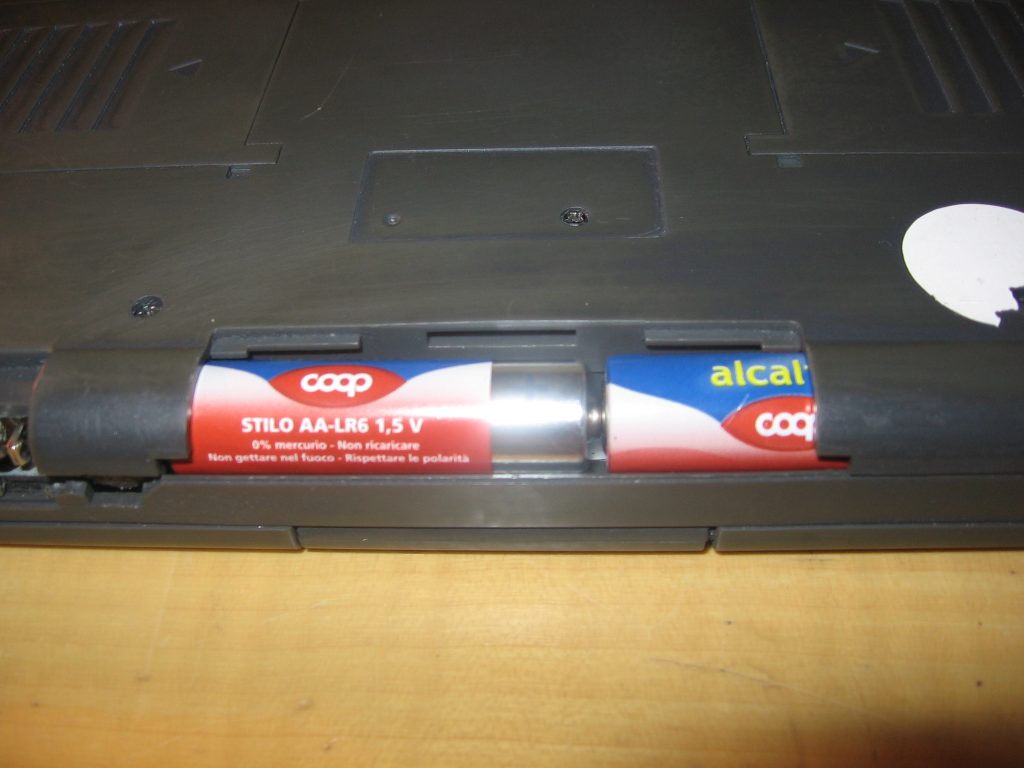
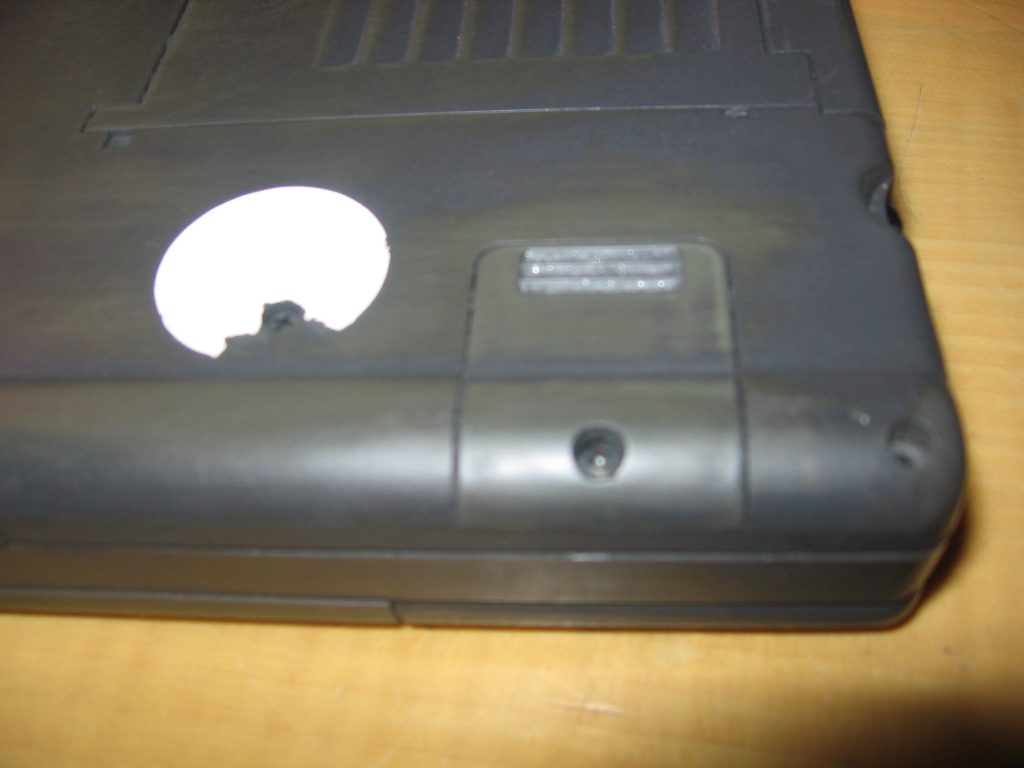
The screen is nothing special even by the standards of its time – a monochrome passive-matrix LCD with adjustable contrast. The screen size is the standard 80×25 characters, which is more than enough for its text-processing and organizing needs. Next to the screen lies a Microsoft Works logo and some holes for the PC buzzer, which is just loud enough to warn you, but not annoyingly loud. It doesn’t even matter all that much, as it only sounds at POST and in MS Works.
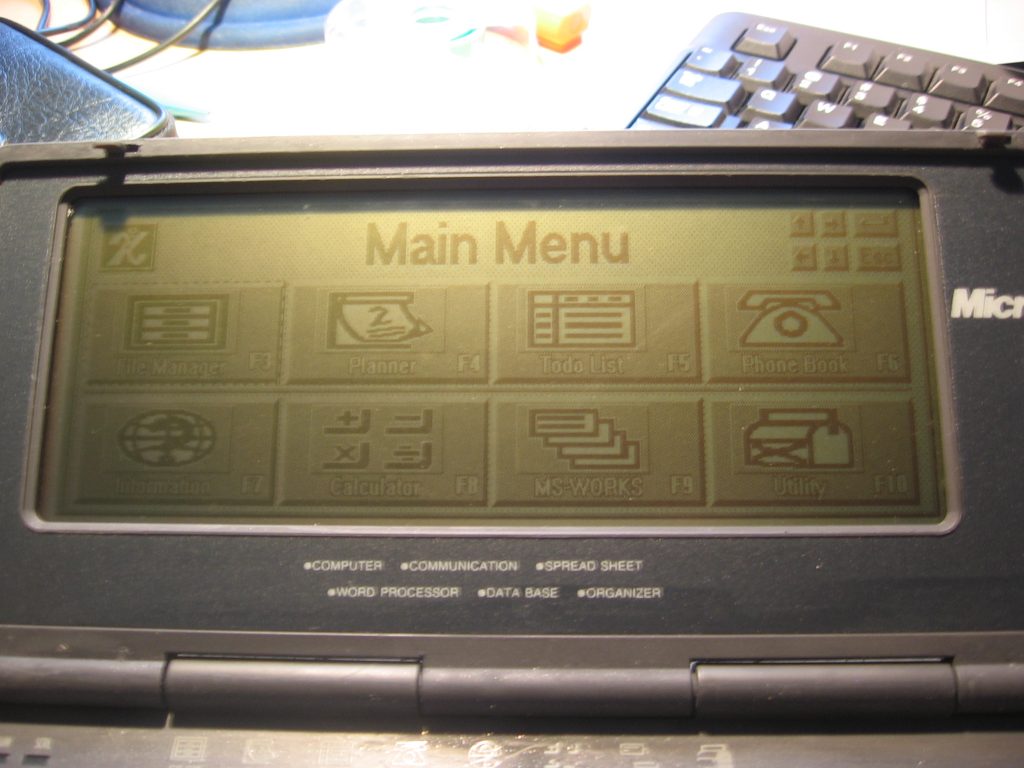
Underneath the screen lies a handy legend telling us the hotkeys for different program shortcuts. The lock LEDs come in the standard green color, and underneath lies the best laptop keyboard I have ever typed on. The people who designed this computer really outdone themselves on it, as even though it’s made of rubber domes, they have that rare tactile quality and a consistent, but pleasantly quiet sound to them. The layout itself is a familiar US one, with the space bar shortened to make place for the Insert and Delete keys. With the computer being a DOS machine, there are also no Windows buttons. Otherwise, there are no modifications to the standard ANSI layout, which makes typing on this computer have no learning curve. The only negative points are the necessarily small keys, which can be a pain to type on if you have fat fingers, and the position of the on/off key right next to the backspace that often results in unwanted power-offs. However, because of the instant turn-on capabilities of the computer, that really doesn’t pose a huge problem.
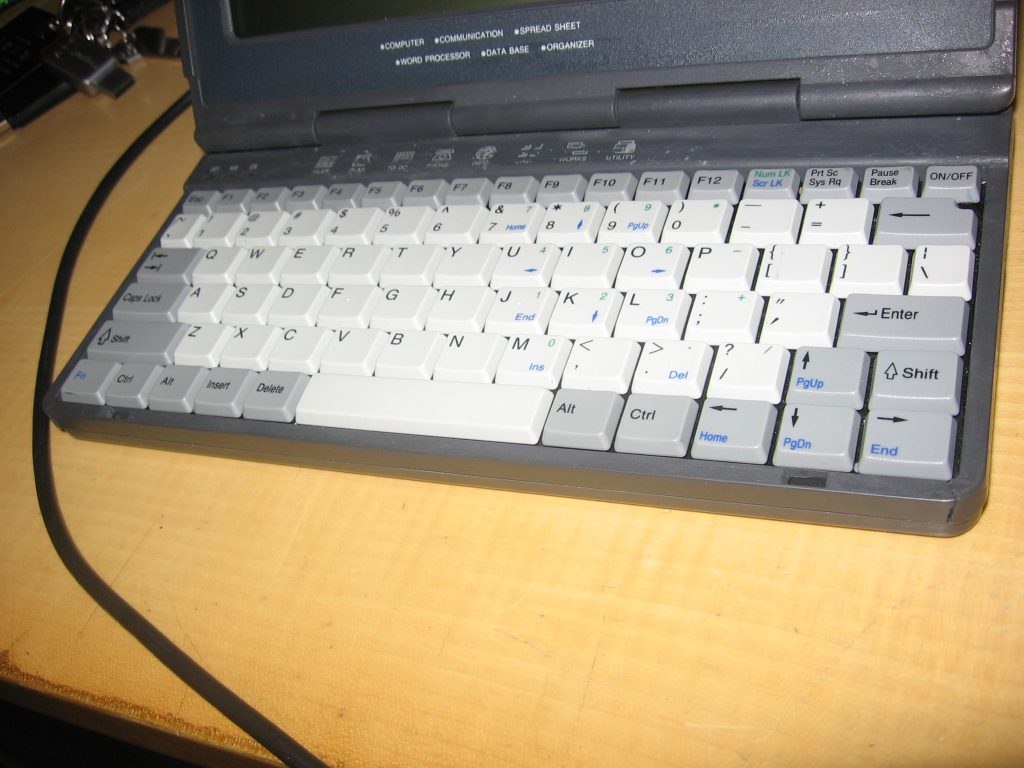
When turned on, the Phoenix BIOS happily tells us that it’s powered by an 8086 clone (allegedly a NEC V30). The amount of system RAM is uncertain, but probably around 768k, as the ramdisk attached at the letter E: takes up around 384k, and DOS reports the same amount of RAM as free. The computer then boots into a GUI, which I will describe later. I usually promptly exit to the DOS prompt.
The operating system runs from ROM attached to the letter C. A quick “ver” reveals that the OS is MS-DOS 5.0, which does the job adequately. The only thing that I miss would be a file editor, as MS Works is a little overkill for editing files.
At the letter D, we find anther ROM containing Microsoft works and other programs that came with the palmtop. The installed Works suite is actually pretty comfortable and snappy to work with and, paired with the excellent keyboard, really makes a very good working environment for focused writing even by today’s standards. In fact, most of this article was drafted on the Tidalwave itself. Besides the word processor, Works provides us also with a spreadsheet editor, a database, and a communications utility (a glorified terminal emulator).
Letter E is a ramdisk, which contain some Works-related stuff and other files that can’t be permanently write-protected. I suspect that the contents of this drive must be extracted from an archive on the ROM at boot time.
If you don’t fancy the pedal-to-the-metalness of a DOS prompt, there is also the default option of a RacePen graphical menu, which lists all of the accessible utilities on the palmtop: a file manager, a calendar/planner, a to-do list, a phone book, another simple database, a calculator and currency converter, the before-mentioned MS Works and some other smaller utilities, none worth describing in particular.
There is also some room for expansion with two PCMCIA slots, designed to accept battery-backed SRAM memory cards. Slots are labeled A and B respectively to the drive letters they are bound to. Through some weird drivers that I have lost track of, you could transfer data to the cards from a Linux laptop, but it can break the filesystem, so I prefer the old reliable XMODEM protocol when it comes to transferring files over to recent hardware. Currently, I have managed to make the system work only with the original Tidalwave 1MB memory card, as newer flash memory based cards will not work.
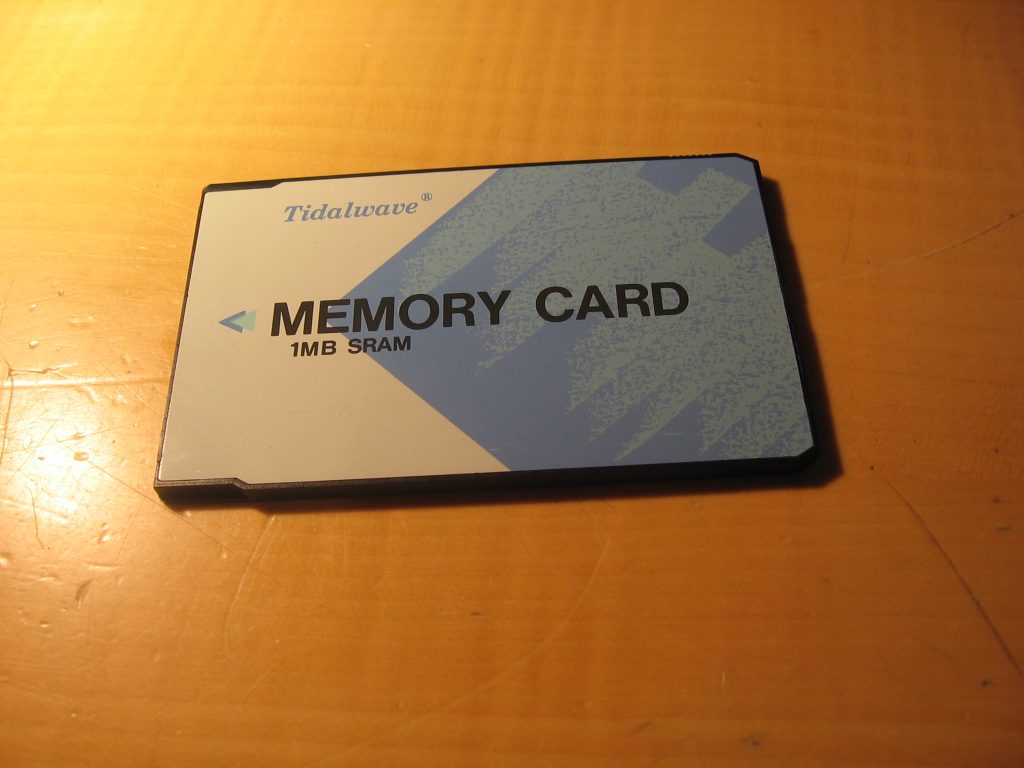
To summarize, all storage onboard this machine is solid state, which makes the computer very fast and also immune to drive failure (although ROM bit-rot is allegedly a thing now).
As far as communications go, we are limited to a serial and a parallel port provided on the back of the palmtop through some proprietary connectors, which can then be broken out with the included cables into standard DB-9 and DB-25 connectors, enabling standard DOS printing and communication. The serial port also gives us the only way of connecting to modern hardware and transferring files from and to the PC. The serial port works great up to 9k6 baud, but becomes temperamental once above that number. I have also successfully used it to connect to serial consoles on Linux and OpenBSD servers.
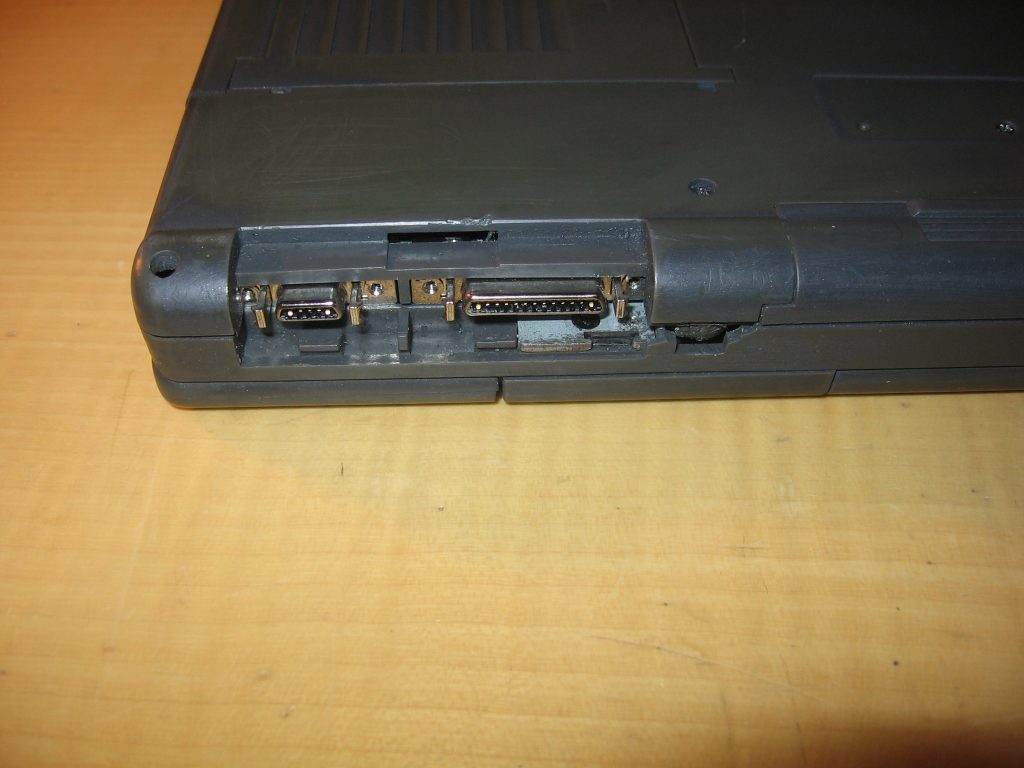
To summarize the end-user experience with the Tidalwave, it really is an old state of the art device, and although very obsolete, still very comfortable to work with. In fact, I still often take it with me, as its long battery life and for its size stellar keyboard make writing articles and keeping long notes much faster than smartphones. Not to mention the wow factor of whipping out a goddamn DOS palmtop to write something down ;).
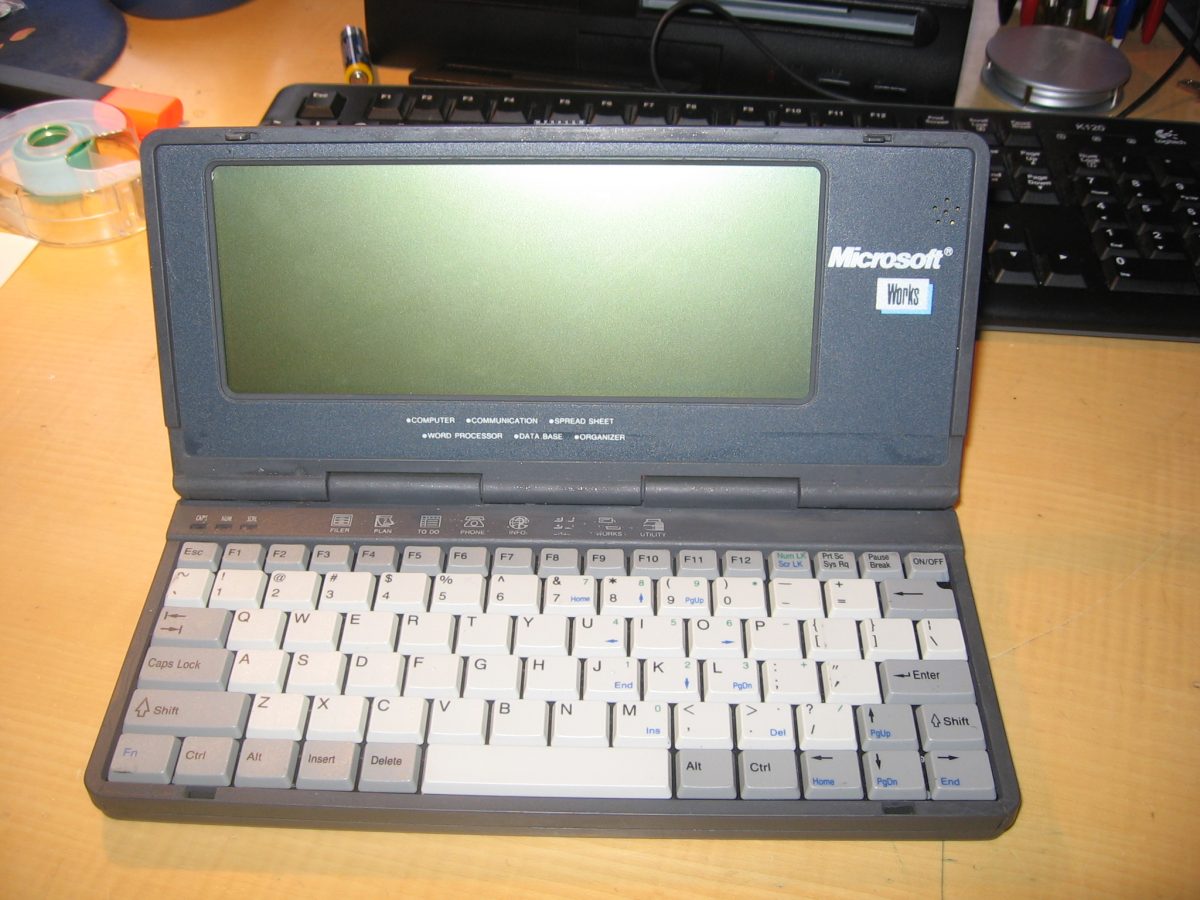
Leave a Reply